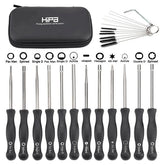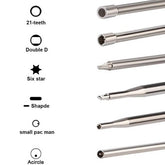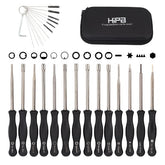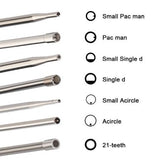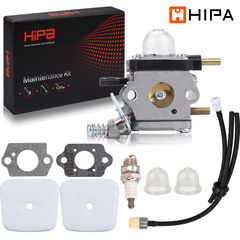How Does A Walk-Behind Lawn Mower Work?
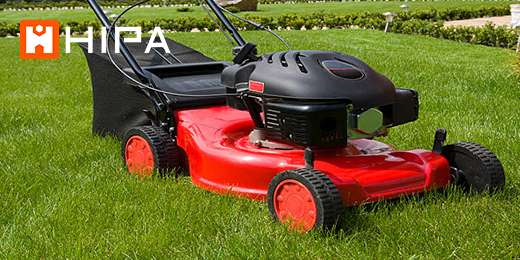
Lawn mower won’t start or won’t stay running? This blog has information on how a walk-behind lawn mower works and offers troubleshooting tips to help you diagnosing and repair.
Although walk-behind lawnmowers can differ in appearance from model to model, they all operate on similar principles. In this blog, we will address how the walk-behind lawn mower works as well as potential problems you may encounter.
Engine
Most walk-behind lawnmowers have a 4-cycle engine. Similar to an automobile engine, 4-cycle engines run on gasoline and have a separate sump for oil start the engine.
To start the engine, the brake veil arm must be held down as the starter rope is pulled. On most models, when the veil arm is released, a grounding circuit is closed and a brake pad is applied to the side of the flywheel to stall the engine. As the rope is pulled, the starter engages the drive cup on the flywheel and rotates the crankshaft. The rotating crankshaft connects to the piston which moves up and down within the cylinder and the ignition process begins.
The flywheel has permanent magnets built into it and as it rotates past the ignition coil, a magnetic field is created. The magnetic field induces electricity, allowing the ignition coil to send voltage to the spark spark. Meanwhile, the intake valve opens as the piston travels down the cylinder, creating a vacuum which draws fuel and air through the carburetor, where it mixes before entering the cylinder. This action is called the intake stroke of the engine.
Next, the compression stroke takes place as the piston travels back up to the top of the cylinder and the intake valve closes. The spark plug now fires and ignites the compressed fuel and air mixture which forces the piston down, creating the power stroke. The momentum of the spinning flywheel provides enough force to push the piston back up. The exhaust valve opens and the combustion gases exit through the muffler. This is called the exhaust stroke.
The engine will continue to run and repeat these 4 cycles until it is shut off.
Choke and Primer Bulb
Some engines may have a choke or primer bulb on the carburetor to assist with starting, especially when the engine is cold. The choke will temporarily restrict airflow through the carburetor, so more fuel can enter the cylinder.
Likewise, a primer bulb draws additional fuel through the carburetor which enters the cylinder before the engine is started. If the engine does not start or it runs improperly, the most likely cause is a defective spark plug or a restricted carburetor. The carburetor can be cleaned but it often needs to be replaced.
Fuel
Be aware that lawnmower engines are designed to use gasoline with no more than 10% ethanol. Gasoline with higher levels of ethanol can be corrosive and attract water which can cause starting or running problems and may damage the fuel system.
You should store the gasoline in a clean sealed plastic container approved for fuel storage. If equipped close, the vent when not in use and store the container away from direct sunlight. If you anticipate storing the fuel for longer than three months, consider adding a fuel stabilizer when you fill the container.
Blade & Self-Propel Drive
The engine crankshaft extends out the bottom of the crankcase and connects to the self-propelled drive pulley if applicable and to one or more cutting blades. Some lawnmowers may incorporate a clutch that is actuated by a lever or bail arm to engage the blades.
A belt connected from the drive pulley to a gearbox or transmission is used to operate the mower’s self-propel feature.
When the drive arm is held, a cable and spring assembly applies tension to the pulley and the front or rear wheels begin to turn. While the grass is being cut, the engine will automatically increase torque as needed to maintain a consistent speed.
The height of the deck can be adjusted, using the levers located near each wheel. It is important to have each lever set at the same level to ensure that the blade will cut the grass evenly.
Depending on the terrain or application, different types of blades are available for your lawn mower. Most mowers come with a standard lift blade that can be used for mulching bagging and side discharge. High lift and gaiter blades are best suited for bagging and mulching while low lift blades are useful when the terrain is sandy or dry and the clippings are not bagged. If you suspect that the blade is dull, you can replace it with the new one, but be sure to disconnect the spark plug boot from the plug itself before attempting any repairs or maintenance.
If the self-propelled drive system does not work, it is likely that the drive belt has worn out or the traction control cable has broken, preventing the pulley from engaging the transmission.
Hipa Repair Center has a solution for many of the problems you may be experiencing with your chainsaw. Enter the product’s full model number in our website search engine for a complete of compatible parts. Hipastore.com also has an extensive selection of instructional blogs to assist you covering topics like part replacement. At hipastore.com, we make fixing things easier.
Revive Your Machine With Hipa All-In-One Kit
Please let us know if this works and if you have any suggestions or comments. Or you can join HIPA DIY COMMUNITY to feature your passion for repair projects, share your stories with the Hipa family and get help from Hipa.













